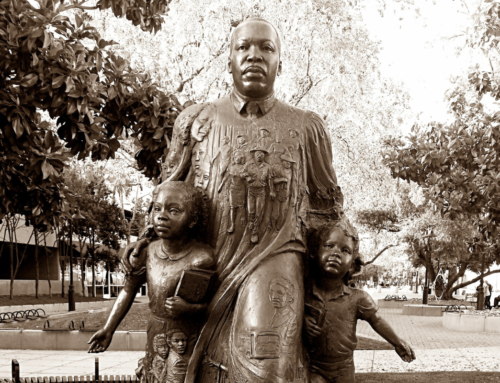It’s hard to get started on a blog on repetition – I find myself wanting to say the same thing over and over again.
Repetition is good. Repetition is good. Repetition is good. It helps with comprehension. But it has to be artful. The old nostrum, ‘tell ‘em what you’re going to say, say it, and tell ‘em what you said’, is bad repetition, because it’s boring. I blogged about this earlier.
Good repetition gathers force as it goes along, because the repeated word or phrase can handle the weight. The repetition becomes memorable as it accumulates emotional meaning underneath the repeated word or words.
There are many kinds of good repetition and you should use all of them.
The most famous modern example of a first kind of repetition to use comes in Martin Luther King’s I have a dream speech from 1963:
I have a dream that one day this nation will rise up and live out the true meaning of its creed: ‘We hold these truths to be self-evident; that all men are created equal.’
I have a dream that one day on the red hills of Georgia the sons of former slaves and the sons of former slave owners will be able to sit down together at the table of brotherhood.
I have a dream that one day even the state of Mississippi, a desert state sweltering (in) the heat of injustice and oppression, will be transformed into an oasis of freedom and justice…..
Here, the repeated phrase gathers emotional impact because of the specifics King attaches to it. The phrase itself is evocative enough to carry the weight, and it works. The technical term for this kind of repetition is anaphora.
Here’s a second kind of repetition, of grammatical structure, from Chief Seattle in 1854:
And when the last red man shall have perished from the earth and his memory among the white men shall have become a myth, these shores shall swarm with the invisible dead of my tribe, and when your children’s children shall think themselves alone in the field, the shop, upon the highway, or in the silence of the woods, they will not be alone….
The repeated use of the conditional ‘shall’ has an incantatory effect, and the words are powerful. Technically, this kind of repetition is also known as anaphora, but it’s useful to think about both phrases and grammatical structure in looking for effective repetition.
The third kind of repetition that works well in oratory is repetition with a difference. You set up an expectation with a phrase and then reverse its order. The most famous modern example of this kind of repetition comes in President John Kennedy’s inaugural address:
And so, my fellow Americans, ask not what your country can do for you – ask what you can do for your country.
My fellow citizens of the world, as not what America will do for you, but what together we can do for the freedom of man….
The technical term is antimetabole.
Finally, there are a number of other less common forms of repetition that are effective in public speaking. They have to be used with caution. If you overdo them, the effect is ludicrous. But if used with art and restraint, your words will approach the magical. A few examples:
Blood hath bought blood, and blows have answer’d blows:
Strength match’d with strength, and power confronted power.
From Shakespeare’s King John; this is known as epanalepsis — repetition at the end of a clause a word from the beginning.
The crime was common, common be the pain.
From Alexander Pope’s “Eloise to Abelard,” this is known as anadiplosis – the repetition at the beginning of a clause of a word from the end of the previous one.
And last of all, once again from Kennedy’s inaugural:
Not as a call to battle, though embattled we are.
This is polyptoton — repetition of words from the same root.
The technical terms are not important, but the various kinds of repetition are. They improve comprehension, they increase the emotional response of the audience, and they add luster to otherwise ordinary prose. Repetition is good.








Leave A Comment